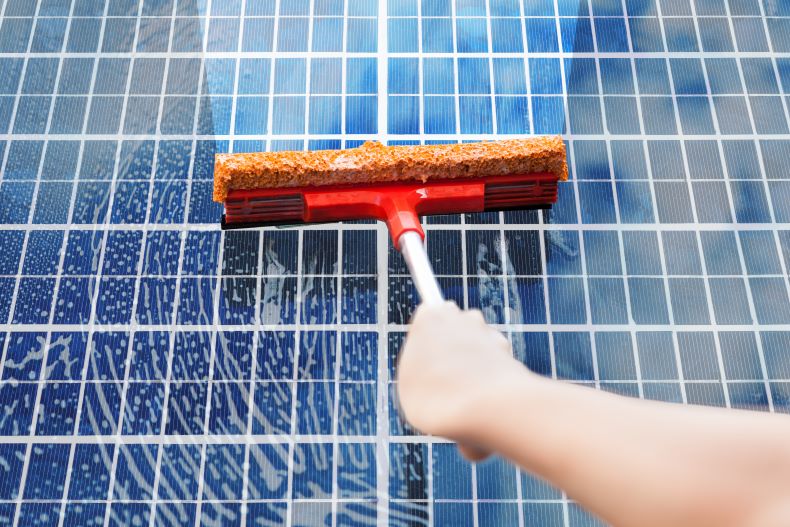Summary:
Scientists from Duke University have been working alongside the Indian Institute of Technology, doing a study regarding the soiling of solar panels. The study found that cleaning solar module cleaning is most effective when removing particles measuring less than 5 micrometers.
Main Article:
Getting Serious About Soiling

Soiling from dust and particulate matter buildup on a solar module’s surface is estimated to reduce a solar panel installation’s output by as much as 40% if left unchecked. And while effective solutions do exist, in the form of anti-soiling coatings for solar module glass and various solar module cleaning solutions, the whole solar power industry can still benefit from a deeper understanding of the mechanisms at work in soiling.
Scientists from Duke University in the United States, working alongside the Indian Institute of Technology (IIT), recently conducted a field study to bring clarity to some of the less-studied aspects of soiling, including the source and properties of the actual dust, and the influence of weather conditions such as humidity on solar module soiling.
On a rooftop at IIT’s campus in Gandhinagar, the capital city of Gujarat, the group set up monitoring and sampling equipment for a five-month period from September 2018 to January 2019. Two 50 W multicrystalline solar modules were set up facing south, with one cleaned nightly as a reference solar panel. The group measured solar module output, temperature, and short circuit current, as well as weather conditions, at five-minute intervals. They also took samples of the dust that had gathered on the solar module surface every three weeks.
Results from the field study are published in the paper Low-cost solar panel soiling sensor validation and size resolved soiling impacts: A comprehensive field study in Western India, published in Solar Energy. The study showed that particles measuring less than 5 micrometers accounted for as much as 50% of the soiling losses, but less than 10% of the overall particle mass. Heavy rain (more than 8mm per hour) serves to clean the solar modules, but light rain and high humidity can actually double the soiling rate.
Low-cost monitoring
The group also devised a new method to estimate soiling rates by using a microscope and camera to take daily images of the deposited particles. Images were taken at night, when lighting could be used to illuminate the particles against the dark sky. The group says that this enabled them to estimate soiling rates within 1% accuracy, and could be rolled out as a low-cost solution in the field.
The study concludes that methods for solar module cleaning should focus on removing particles measuring less than 5 micrometers to be most effective. It also finds that measuring relative humidity could be a better indicator for solar panel soiling than airborne particulate matter, and that overall energy yields from solar energy could greatly benefit from cleaner, clearer air.
Get creative and design your own rooftop solar system by going to HahaSmart and using the design DIY tool and see how much the system will cost using the price checker tool.


Input your address to see if it is solar friendly and how much you can save with solar.
Great. Your address is perfect for solar. Solar incentive is still available. Select monthly utility cost and calculate the size of solar system you will need now.
| kw System size | years Payback period | Lifetime savings |
No money down, 100% finance is available.

|
|
Get the Best Solar Panels on the Market Here! |
Comments